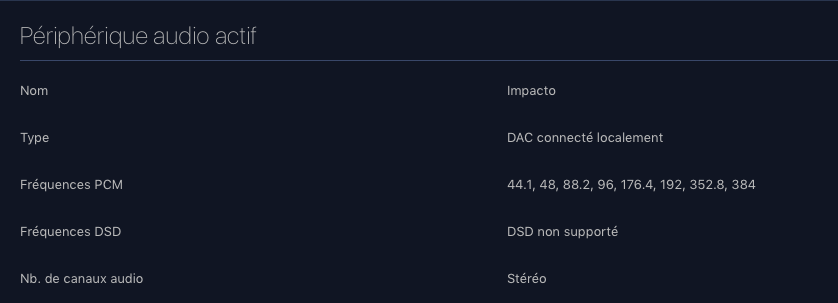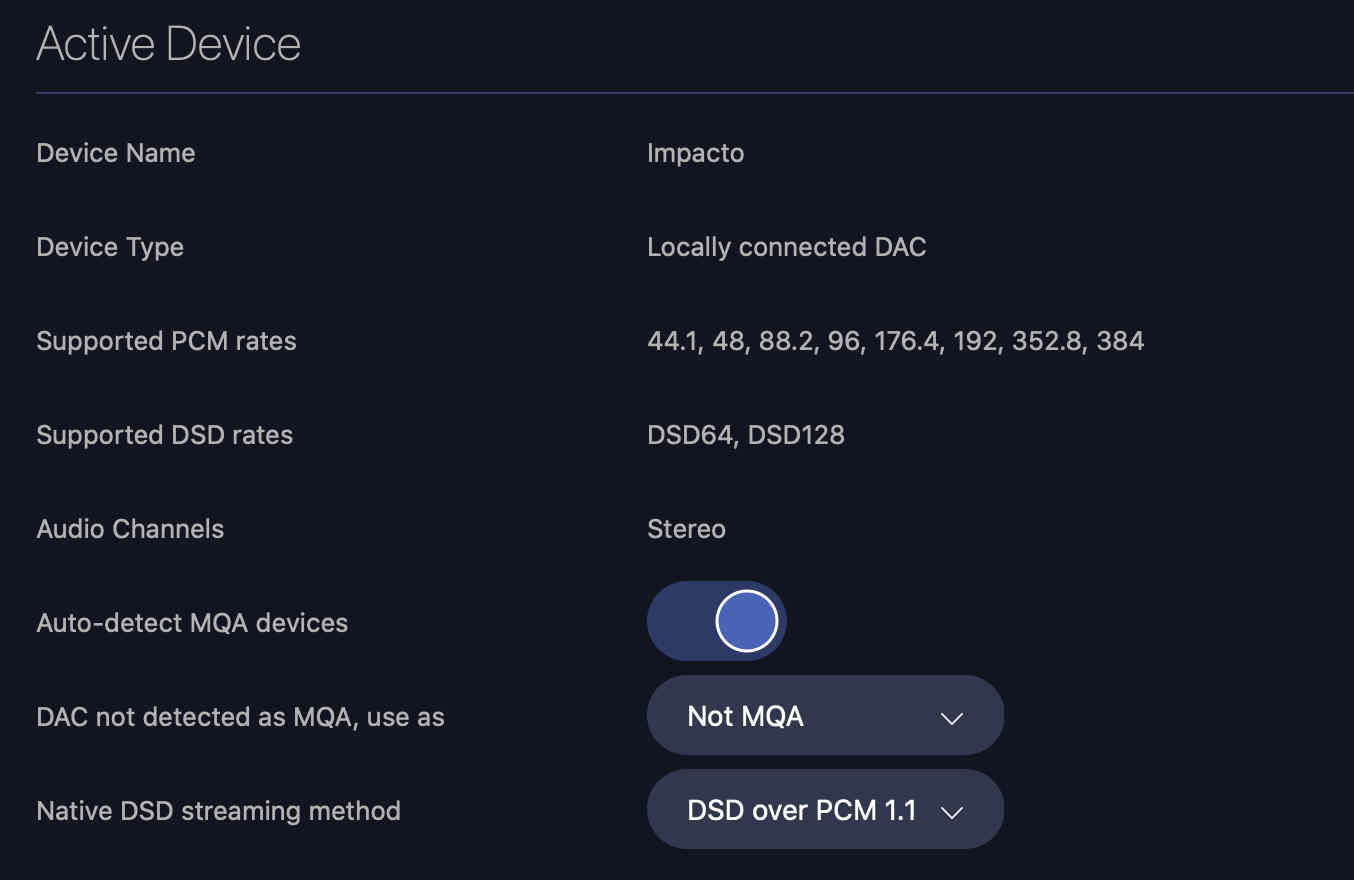I conducted an experiment today to compare the sonic quality of tracks played using A+ from different sources. My setup is a late-model iMac running Mojave with a 3.6GHz quad core Intel Core I7 CPU, 32 GB RAM, a 500 GB SSD and my media is on an 8 TB LaCie Thunderbolt HDD. The DAC is a Beyerdynamic Impacto driving TP1 headphones. I also have an older Mac mini as a media server for my home theater, and I’ll try to test that setup another time. Because my wife has sensitive hearing, however, most of my critical listening is done with headphones.
I selected several tracks for my test spanning a wide variety of music types - including tracks by Bach and Tchaikovsky, Miles Davis, Weather Report and Wayne Shorter, Frank Sinatra and Willie Nelson, The Beatles, The Carpenters, David Bowie, Hozier, Weezer and Daft Punk. The only requirement was that all tracks be available on Tidal and Qobuz as well as in my library. The Qobuz and local tracks were identical in resolution - 24 bit / 44.1kHz, 96kHz and 192kHz. I also have Weather Report in DSD64 for comparison. All of the Tidal tracks were 16 bit / 44.1kHz, with a few of them also in MQA. I didn’t do random blinded testing, as the results were not subtle. The differences in sound quality were striking and in a way, surprising.
MQA vs Lossless: The first big surprise was that the lossless tracks sounded considerably better than the same tracks in MQA. The MQA versions sounded flat, lacking in depth, bandwidth and soundstage. However, that was not my previous experience with Tidal when I listened a couple of years ago. One major difference then versus now, however, was that when I listened before at work, my DAC was an Audioquest Dragonfly Black 1.5 driven by an iPhone 6s+, connected to a pair of Audioengine A2+ speakers. The Tidal iOS app is no match for Audirvana Plus and my iMac, and as good as the Audioengine speakers are, they’re no match for the Beyerdynamic TP1s. On the other hand, The Dragonfly has hardware MQA decoding, which probably makes all the difference. I suspect the software MQA decoding algorithm in Audirvana is no match for the hardware decoding of the Dragonfly, but Audirvana’s handling of CD-quality lossless music is unmatched.
Qobuz vs Tidal: This really isn’t a fair contest, given that the Qobuz tracks were all Hi-Res and the Tidal tracks were CD lossless. Granted, CD quality can be quite good IFF the mastering is done well, which is seldom the case, particularly with popular music. Even then, although the dynamic range of the CD is greater than 90db, it’s static. The human ear is dynamic and so our effective dynamic range is much greater. Further, it’s impossible to reproduce the cannon blasts at the end of Tchaikovsky’s 1812 Overture without losing the softest passages in the quantization noise of the smallest bits. Something has to give, and it’s usually at both ends of the dynamic range. Using 24 bits allows the full dyadic rage of the music to be reproduced if your sound system is capable of reproducing it. A 44.1 kHz sample rate is adequate to reproduce the full bandwidth of what the human ear is capable of hearing, but only with ideal filters. Oversampling and high-quality digital filters are more than adequate to the task, but a lot of popular CDs have been pre-filtered to oblivion, and the mixing utterly destroys any sense of a real soundstage. Of course there’s no advantage to Hi-Res if the mixing and mastering isn’t up to the task. But I digress. The bottom line is that the Qobuz tracks were significantly more open than the Tidal Tracks. I could definitely hear subtle vocal overtones and percussion sounds with Qobuz streaming that were lost on Tidal.
Library vs Qobuz: The most surprising finding was that the tracks from my local library sounded significantly better than those streamed from Qobuz, and the difference wasn’t subtle. As good as the Qobuz tracks were, they still sounded digital. The local tracks sounded as good as what I’ve experienced from the best analog recordings on reel-to-reel tape and vinyl, and they came close to rivaling a live performance. The dynamic range was full with vocal overtones and subtle percussion clearly audible and free of artifact. Individual voices and musical instruments could be clearly separated from each other and localized on the sound stage with pinpoint precision. The soundstage was broad and realistic. This was the reason I bought Audirvana Plus in the first place.
DSD vs PCM: With all of my previous software, which included Pure Music, Amarra Symphony and BitPerfect, I was convinced that DCD tracks sounded much more natural than PCM tracks, but Audirvana has closed the gap. I would be hard pressed to choose between DSD tracks and PCM versions of the same tracks in blind A/B tests.
Summary: Local tracks sound better than those streamed from Qobuz, which sound better than those streamed from Tidal. On my setup, MQA-encoded tracks actually sound worse than lossless 16-44.1kHz tracks. There is no difference between the acoustic quality of DSD tracks versus PCM. High-Res tracks played from my local library, regardless of sample rate, sounded as good as the best analog recordings, with excellent reproduction of vocal overtones and subtle percussion, clear separation of individual voices and instruments, and a broad, localized soundstage. Neither streaming service could match those qualities, even when the sample rate and bit depth were identical to those of my local tracks.
The Bottom Line: For the time being, I’ll still be buying rather than renting my music.
 )
)



